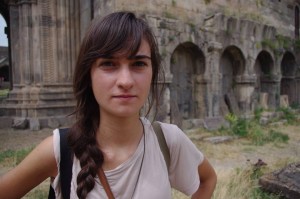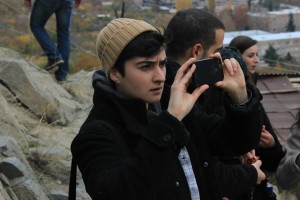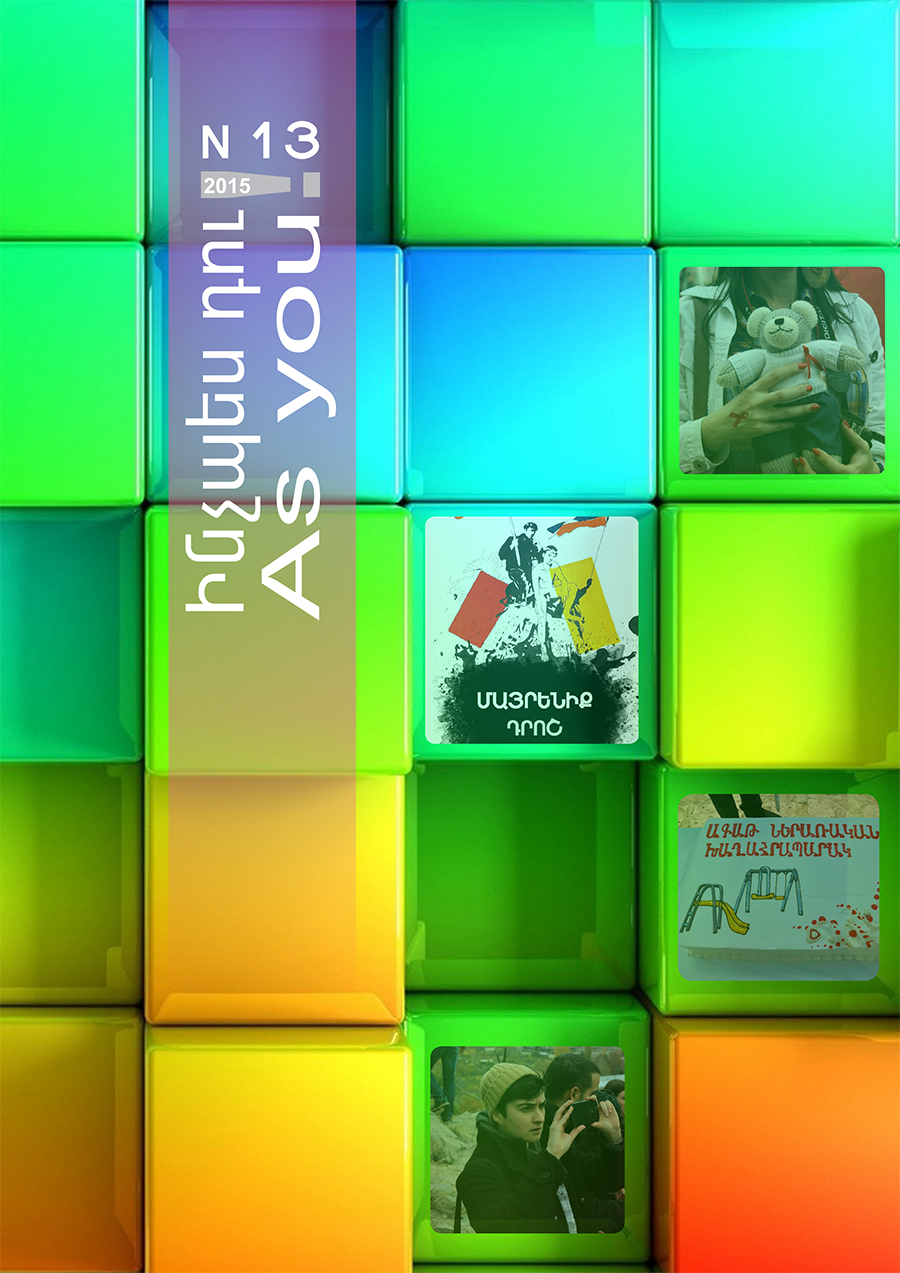I am, in some ways, an experiment.I have lived in Armenia presenting as both female and male, projecting both femininity and masculinity to Armenian society. In turn, I have experienced the feeling of being oppressed and holding the unfamiliar weight of male privilege. When it comes to talking about gendered inequality in Armenia, this discussion is neither novel nor profound; we know there is an excruciating amount of pressure for Armenian women to live out a pre-written narrative, we know that domestic violence is an ugly reality, we know that there are ways to get involved to change this. But most of us can only tell our stories through one lens, either the lens of the oppressed or the benefactor. For me, this is not the case. This is not a story from the perspective of a woman. This is not a story from the perspective of a man. This is a story of a person who—because of biological circumstance and an unremitting pursuit to live authentically—has experienced Armenia outside the margins of “male” and “female.”
It is the summer of 2011. A few cold Kotayks help to forget the heat for a while and then we decide to walk home. In Yerevan at night, a black car pulls up beside us. I don’t speak Armenian. My sister does. I don’t understand what she says but I understand the way she says it (dismissive and infuriated), and more important, I understand why these men have stopped. We are women. We are out past 8pm. We don’t have a male chaperone.
Armenian society, still very much a patriarchal one, makes little room for conversations surrounding women’s rights and safety. And if there is a conversation, many are quick to ridicule the topic of discussion rather than to listen, learn, and contribute. What even more people fail to realize is that women’s rights are inherently tied to national growth; limit half of the population and by default, you limit the nation.
Fast-forward three years after walking home that night with my sister. I decide to leave my job and my tiny apartment in New York to volunteer with Birthright Armenia and experience the country this time on my own. Three flights, two days, and one hotel later, I am in Zvartnots Airport at the customs window staring at a border control officer whose gaze jumps frantically from my passport photograph to my face. “You are Tamar?” she asks, in a condescending tone. What she meant was “I am finding it difficult to believe that the Tamar I see in this photograph and the Tamar in this airport have continuity of experience and are, in fact, the same person.” I don’t blame her for her skepticism. Sometimes, I look at old photos and have trouble recognizing my former feminine self. She stares some more, maybe to check my features against my photograph taken seven years ago, maybe to make me feel like I’ve shamed my entire nation, and then stamps the page slowly, deliberately, without breaking eye contact. “Welcome home,” say the walls of Zvartnots.
- Tamar before
- Tamar nowadays
I knew things would be different this time around. After that high-femme-presenting summerin Armenia with my sister I had been living in New York for three years. Not coincidentally,I had been growing into my masculinity throughout that time. New York didn’t make me queer and transgender and masculine but rather provided an environment for me where I felt safe to explore both my gender and sexuality.
Looking genderqueer in Armenia brought loads of uncomfortable situations my way—bathroom confusion, strangers asking each other what my gender is on the bus assuming I wouldn’t understand, stares on the metro that made me wonder if there was an Armenian gene that enabled people to not blink for six-minute intervals. To say that I was having an easy and comfortable time as a male-presenting-but-still-female-bodiedperson in Yerevan would be untrue. It was not easy, but it was safe. Arguably, it was safer than being a straight cisgender woman in Armenia.
When people saw me as “female,” I was harassed on the street at night. I asked my landlord for a mop to clean my apartment and instead he brought his son for me to marry, because who could possibly have problems as silly as leaky pipes while married to a man?
Yet when people read my gender as “male,”the story changed. I went to meet a friend on Northern Avenue so we could exercise our freedom to drink Kotayks and take doodoo shots into the night. She was sitting on a bench surrounded by three teenage boys trying to engage with her when I walked over to give her a friendly hug. The boys saw me approaching and immediately stopped bothering her. She had asked them to leave and they didn’t. All I had to do was be physically present with her and these boys walked away. They respected my vague presence more than her direct request to be left alone.

Tamar, whose gender people read as “male”
Visiting Armenia presenting masculine made clear that how you are seen by society is largely related to the treatment you receive within it, and however you identify, society will act much like a mirror; it will project back to you what it sees on the surface. If at first glance society sees “maleness,” it ascribes to you the treatment of a male. If it sees “femaleness,” you are assigned that treatment as well, regardless of your internal gender identity or biological sex.
Taking this a bit further, if “femaleness” is the trait that makes people a target for street harassment and general discrimination, then misogyny does not only affect women. It affects anyone who is, acts, or appears “not male enough.” Misogyny, therefore, can be seen as the root of intolerance towards people with deviant-from-the-norm genders and sexualities. Theacceptance of LGBTQ people in Armenia begins with addressing the rampant misogyny in society.
It is important to note that the gender binary “male” and “female” does not just exist in Armenia. It is a pervasive societal division all over the world that serves to oppress anyone who falls in between or outside of those end points. A survey from 2011 reports that in the United States, 45% of all reported hate murders—not crimes but murders—were against transgender women. Misogyny is not a problem unique to Armenia. I did notice, however, that a society with a more strongly enforced gender binary tends to have more strongly oppressed women.
Even so, I see hope for Armenia. More activism against gender violence takes place in Yerevan than in my mostly conservative hometown in New Jersey. There are LGBTQ people in Armenia who live authentic lives despite family or societal intolerance. There are LGBTQ people in Armenia who are educators. There are LGBTQ people in Armenia who blend in either because they want to (there is no one way to “look” gay or transgender) or because they fear the repercussions if they don’t. Queer people—queer Armenians—exist, and those active in Armenian society are paving the way for a more open, honest, and diverse Armenia.
It is ironic that a country with such a tragic history—where people hold onto a lived experience of being targeted for an identity they could not control and in fact, were proud of—cannot at the same time draw a parallel between ethnic cleansing and the erasure of women and LGBTQ voices in society. If any nation’s history offers an understanding of what it means to be targeted as “the other” and consequently hated, expunged, and wanted dead, it is Armenia’s.
While I can’t say I know what it is like to be a queer Armenian living in Armenia without the privilege of knowing I can return to places with a greater acceptance of otherness, as a diasporan I can say this: to anyone in the LGBTQ community considering coming to Armenia for the first or second or third time, I know it is uncomfortable to be yourself in a society that tells you who you are is wrong and shameful; but I encourage you, if possible, to bring all of yourself, all of the identities it hurts to hold in one body, to Armenia. It is a place that will surprise you, challenge you, inspire you, feed you knowledge and khorovats on the side, and I promise you, even if you don’t feel it immediatelywhile waiting in line at customs, it is a place where you belong.
Tamar Boodaghians





